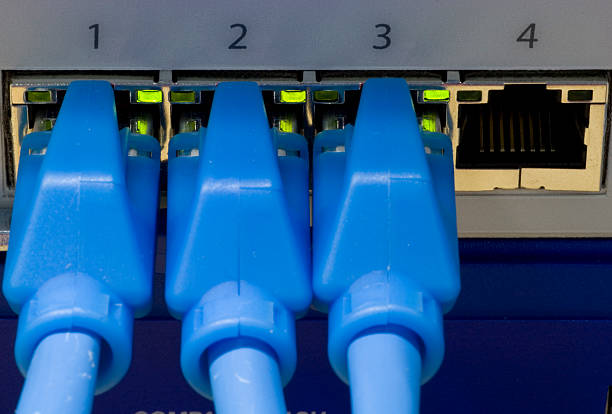
Introduction
Voice over Internet Protocol (VoIP) systems have become the backbone of modern business communication, offering cost-effective and flexible solutions for connecting teams and clients. However, the performance of VoIP systems heavily relies on the quality of the underlying cabling infrastructure. At Prime Data Cabling Services, we understand that even minor cabling issues can disrupt call quality, leading to frustration for both users and IT support teams. This article explores common VoIP cabling issues, how to diagnose them, and practical solutions to ensure seamless communication for support technicians and IT teams.
Importance of Reliable Cabling for VoIP Performance
Reliable cabling is critical for VoIP systems because they transmit voice data as packets over networks, requiring consistent and high-quality connections. Poor cabling can lead to degraded performance, affecting call clarity and reliability. Key reasons why cabling matters include:
Data Integrity: Proper cabling ensures voice packets are transmitted without loss or corruption.
Low Latency: High-quality cables minimize delays, ensuring real-time communication.
Scalability: Robust cabling supports future upgrades and increased VoIP traffic.
Identifying Common VoIP Cabling Issues
VoIP systems are sensitive to network conditions, and cabling issues often manifest as noticeable disruptions. Below are the most common problems IT teams encounter.
Call Drops
Call drops occur when VoIP connections are interrupted, causing conversations to end abruptly. This issue is frustrating for users and can harm business operations.
Causes: Loose connections, damaged cables, or electromagnetic interference (EMI).
Symptoms: Frequent disconnections during calls, especially under heavy network load.
Latency and Jitter
Latency refers to delays in voice data transmission, while jitter is the variation in packet arrival times. Both degrade call quality, making conversations choppy or delayed.
Causes: Outdated cabling (e.g., Cat5), long cable runs, or improper shielding.
Symptoms: Echoes, delayed responses, or inconsistent audio quality.
Poor Call Quality
Poor call quality includes issues like static, garbled audio, or low volume, which can make communication difficult.
Causes: Improper cable termination, low-grade cables, or crosstalk between cables.
Symptoms: Users report muffled or distorted audio during calls.
Diagnosing Cabling Problems
Diagnosing VoIP cabling issues requires a systematic approach to pinpoint the root cause. IT support teams can use specialized tools and methods to identify problems efficiently.
Cable Testing Methods
Cable testing verifies the integrity and performance of the cabling infrastructure. Common methods include:
Continuity Testing: Checks for broken or disconnected wires within cables.
TDR Testing: Uses Time Domain Reflectometry to locate faults like breaks or shorts.
Certification Testing: Ensures cables meet standards like TIA/EIA for VoIP performance.
Network Diagnostics Tools
Network diagnostics tools help IT teams analyze VoIP performance and identify cabling-related issues.
Packet Analyzers: Tools like Wireshark monitor packet loss, latency, and jitter.
Network Testers: Devices like Fluke Networks’ CableIQ provide detailed cable performance reports.
VoIP-Specific Tools: Software like SolarWinds VoIP & Network Quality Manager tracks call metrics.
Solutions to VoIP Cabling Issues
Once cabling issues are identified, IT teams can implement targeted solutions to restore VoIP performance. These solutions focus on proper installation, infrastructure upgrades, and ongoing maintenance.
Proper Installation and Termination
Correct installation and termination of cables are essential for reliable VoIP performance.
Use Proper Connectors: Ensure RJ45 connectors are crimped correctly to avoid signal loss.
Follow Standards: Adhere to TIA/EIA-568-B standards for twisted pair wiring.
Avoid Overloading: Keep cable runs within recommended lengths (e.g., 100 meters for Cat6).
Upgrading Cabling Infrastructure
Upgrading to modern cabling standards can significantly improve VoIP performance, especially for high-bandwidth applications.
Cat6: Supports up to 10 Gbps, ideal for most VoIP setups.
Cat6A: Offers better shielding and performance for larger networks.
Fiber Optics: Provides high-speed, low-latency connections for enterprise-grade VoIP systems.
Regular Maintenance and Certification
Ongoing maintenance ensures cabling remains in top condition, preventing VoIP issues.
Periodic Inspections: Check for physical damage, loose connections, or wear.
Recertification: Re-test cables every few years to ensure compliance with standards.
Cable Management: Use proper labeling and organization to avoid interference.

Best Practices for IT Support Teams
IT support teams play a critical role in maintaining VoIP performance. Adopting structured approaches and preventive measures can minimize disruptions and ensure long-term stability.
Structured Troubleshooting Approach
A systematic troubleshooting process helps IT teams resolve VoIP issues quickly.
Step 1: Reproduce the Issue: Confirm the reported problem (e.g., call drops or latency).
Step 2: Isolate the Cause: Test cables, check network settings, and review VoIP configurations.
Step 3: Implement Solutions: Apply fixes like re-terminating cables or replacing faulty ones.
Step 4: Verify Resolution: Test VoIP performance post-fix to ensure the issue is resolved.
Preventive Measures for Long-Term Stability
Proactive measures can prevent VoIP cabling issues from occurring.
Regular Training: Ensure IT teams are trained in VoIP and cabling best practices.
Environmental Control: Protect cables from heat, moisture, and EMI sources.
Documentation: Maintain detailed records of cabling layouts and test results.
Conclusion
Reliable cabling is the foundation of seamless VoIP communication, enabling businesses to maintain clear and consistent calls. By understanding common VoIP cabling issues like call drops, latency, and poor call quality, IT support teams can diagnose problems effectively using cable testing and network diagnostics tools. Implementing solutions such as proper installation, infrastructure upgrades, and regular maintenance ensures long-term VoIP performance. Adopting best practices, including structured troubleshooting and preventive measures, empowers IT teams to deliver uninterrupted communication. For expert assistance with VoIP cabling solutions, contact Prime Data Cabling Services .
FAQ’s
1. What are the most common VoIP cabling issues?
Common VoIP cabling issues include call drops, latency, jitter, and poor call quality, often caused by damaged cables, improper termination, or outdated infrastructure.
2. How can I test my cabling for VoIP problems?
Use cable testing methods like continuity testing, TDR, or certification testing, and network diagnostics tools like Wireshark or Fluke Networks’ CableIQ to identify issues.
3. Why should I upgrade to Cat6 or Cat6A for VoIP?
Cat6 and Cat6A cables support higher bandwidths and better shielding, reducing latency and interference, which improves VoIP performance.
4. How often should cabling be maintained for VoIP systems?
Cables should be inspected and recertified every 2-3 years, with periodic checks for physical damage or environmental factors affecting performance.
5. What is the role of IT support teams in VoIP cabling?
IT support teams diagnose and resolve cabling issues, implement upgrades, and follow best practices like structured troubleshooting and preventive maintenance to ensure VoIP stability.
